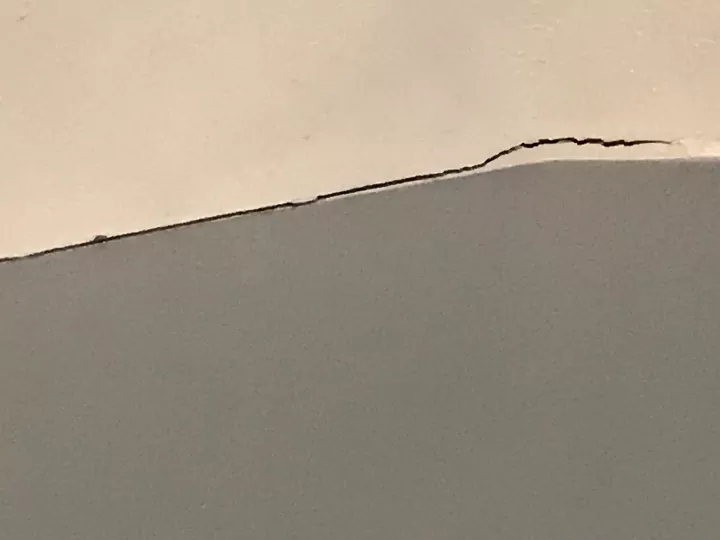Cracks where the ceiling meets wall can be more than just an eyesore; they may indicate underlying issues. In this comprehensive guide, we’ll delve into the reasons behind cracks in this common problem area, how to fix them, and preventive measures to ensure a flawless home interior.

Introduction
The junction where the ceiling meets the wall is prone to developing cracks over time. These cracks can result from a variety of factors, including settling of the foundation, temperature fluctuations, or even poor construction. Understanding the root cause is crucial to implementing effective solutions.
Crack Where Ceiling Meets Wall: Unraveling the Causes
1. Foundation Settling
One common cause of cracks in this area is the settling of the foundation. As a house ages, the foundation may shift, causing stress on the walls and ceiling, leading to visible cracks. Identifying foundation settling early is essential to prevent further damage.
2. Temperature and Humidity Fluctuations
Extreme temperature changes and high humidity levels can cause materials to expand and contract. This constant movement can result in cracks forming where the ceiling meets the wall. Understanding the climate in your region can help you anticipate and address this issue.
Read too: A Step-by-Step Guide to Installing Rockwool Insulation in Your Ceiling: Unlock Energy Efficiency
Strategies for Repairing a Crack Where Ceiling Meets Wall
When confronted with a crack in the intersection of your ceiling and wall, it’s essential to address it promptly to prevent further damage. Here are effective strategies for repairing and restoring the seamless look of your home.
1. Patching and Painting
For minor cracks, patching compounds can be used to fill in the gap. Once patched, repaint the affected area to restore a uniform appearance. This quick fix is suitable for small cracks caused by minor shifts.
2. Joint Compound and Mesh Tape
For more substantial cracks, especially those that reoccur, using joint compound and mesh tape is a durable solution. Apply the joint compound over the crack, place the mesh tape, and layer on more compound. Sand and paint for a smooth finish.
3. Addressing Underlying Foundation Issues
If the crack is persistent and indicative of foundation settling, it’s crucial to consult with a professional. Foundation repairs may be necessary to prevent further structural damage. A structural engineer can assess the situation and recommend appropriate measures.
Preventive Measures: Keeping Cracks at Bay
Prevention is key to maintaining a crack-free ceiling and wall junction. Consider implementing the following measures to minimize the risk of cracks in the future:
1. Regular Home Inspections
Conduct routine inspections of your home, paying close attention to the ceiling and wall junctions. Early detection of minor cracks allows for timely intervention before they escalate into major issues.
2. Proper Ventilation
Maintain adequate ventilation in your home to regulate humidity levels. Excessive moisture can contribute to the deterioration of building materials, making them more susceptible to cracks.
Conclusion: A Seamless Home Awaits
In conclusion, understanding the causes of cracks where the ceiling meets the wall is the first step toward a solution. By implementing effective repair strategies and adopting preventive measures, you can ensure that your home remains a haven of seamless beauty. Don’t let cracks mar the aesthetic appeal of your living space – take action today for a home that stands the test of time.
This comprehensive guide empowers homeowners to address and prevent cracks effectively, offering insights into the causes and solutions for a seamless living environment.